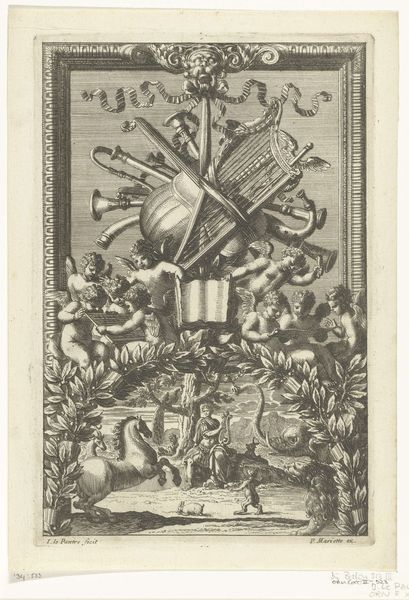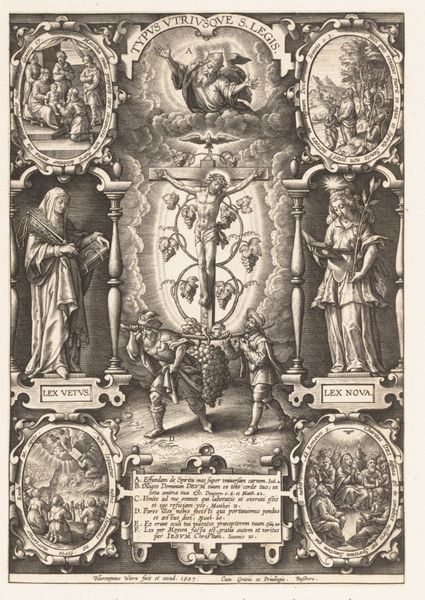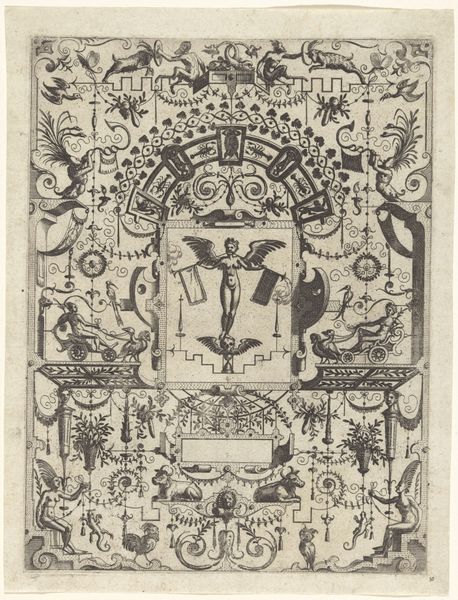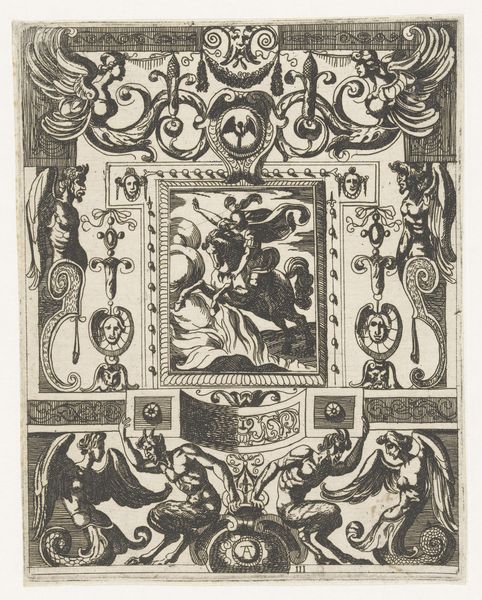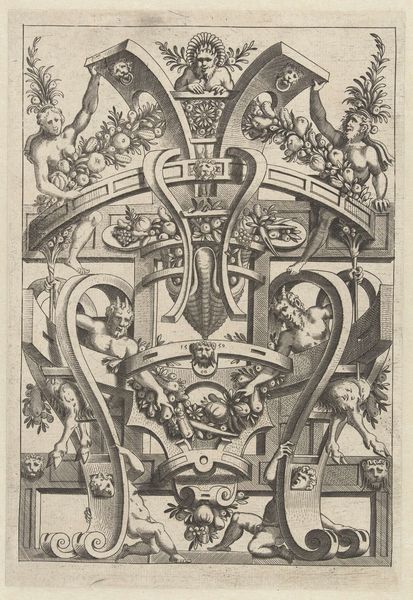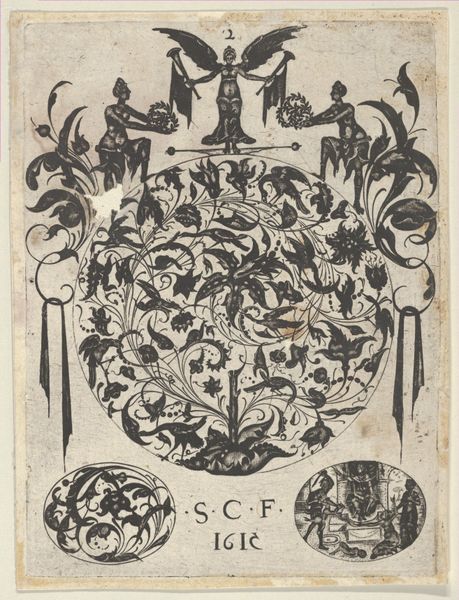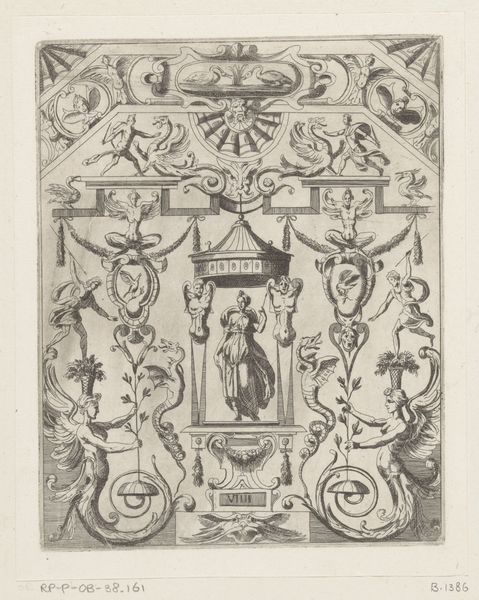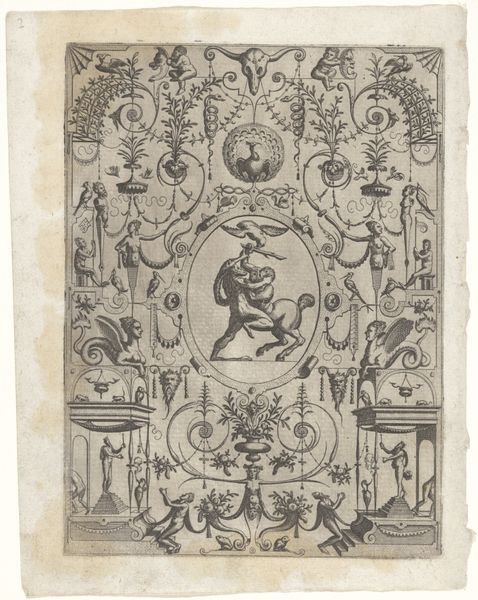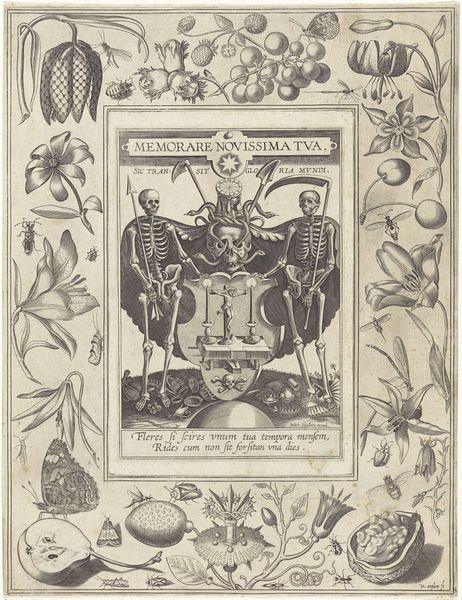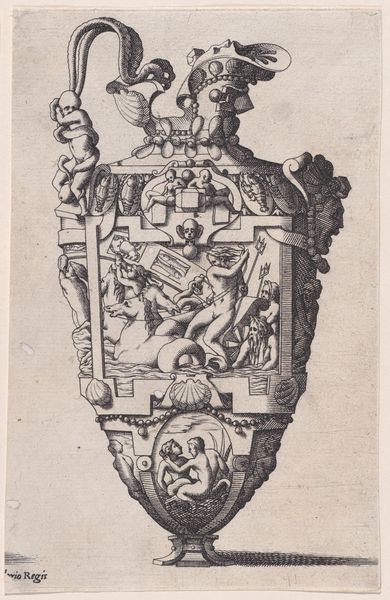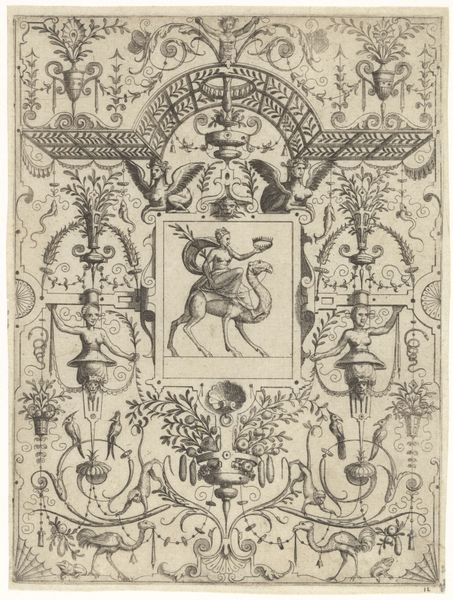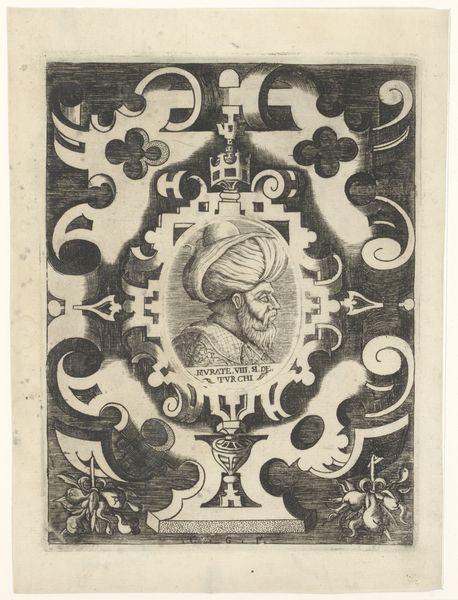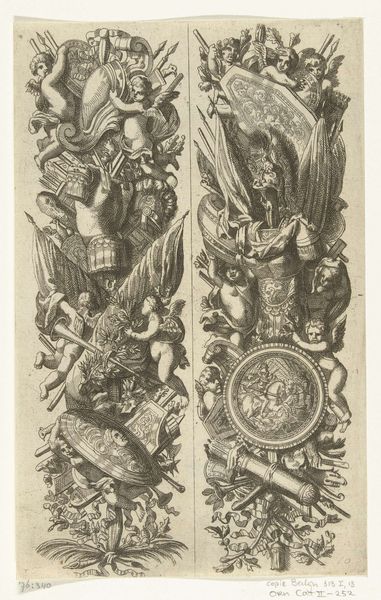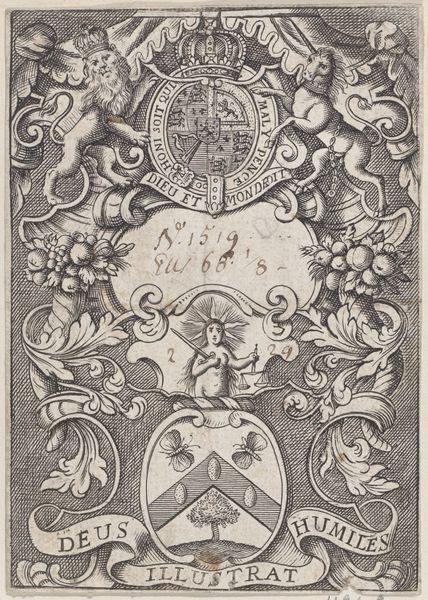
Grafmonument in de kathedraal van Tübingen van Eberhard I von Württenberg before 1736
0:00
0:00
drawing, graphic-art, print, ink, pen, engraving
#
drawing
#
graphic-art
#
baroque
#
pen drawing
# print
#
old engraving style
#
ink
#
pen-ink sketch
#
pen work
#
pen
#
engraving
Dimensions: height 340 mm, width 195 mm
Copyright: Rijks Museum: Open Domain
This print of Eberhard I von Württemberg's tomb monument was created by Andreas Matthäus Wolfgang, likely in the late 17th or early 18th century. It offers insight into the public role of art during the Baroque era in the German lands. Tomb monuments were elaborate displays of status, and prints like this helped disseminate the image of the deceased to a wider audience. This particular print emphasizes Eberhard's lineage and virtues through its heraldic imagery and Latin inscriptions. Consider how the visual codes of heraldry – the flags, crests, and symbols – communicate power and authority. The monument's location within the Tübingen Cathedral further underscores the intertwined relationship between religious institutions and political power. By studying such artworks, we can gain a deeper understanding of the social conditions that shaped artistic production. Resources like genealogical records, historical accounts, and studies of heraldry can help us decode the messages embedded within the image and better understand its role in constructing and reinforcing social hierarchies.
Comments
No comments
Be the first to comment and join the conversation on the ultimate creative platform.
